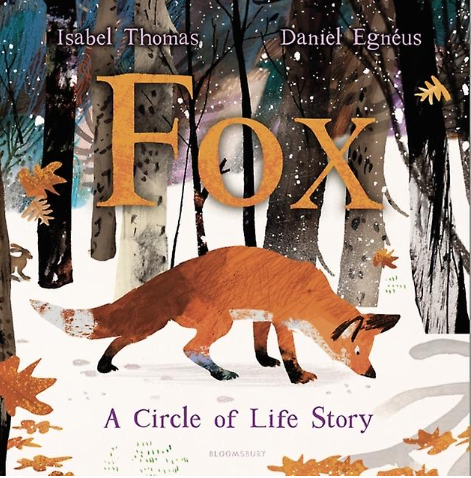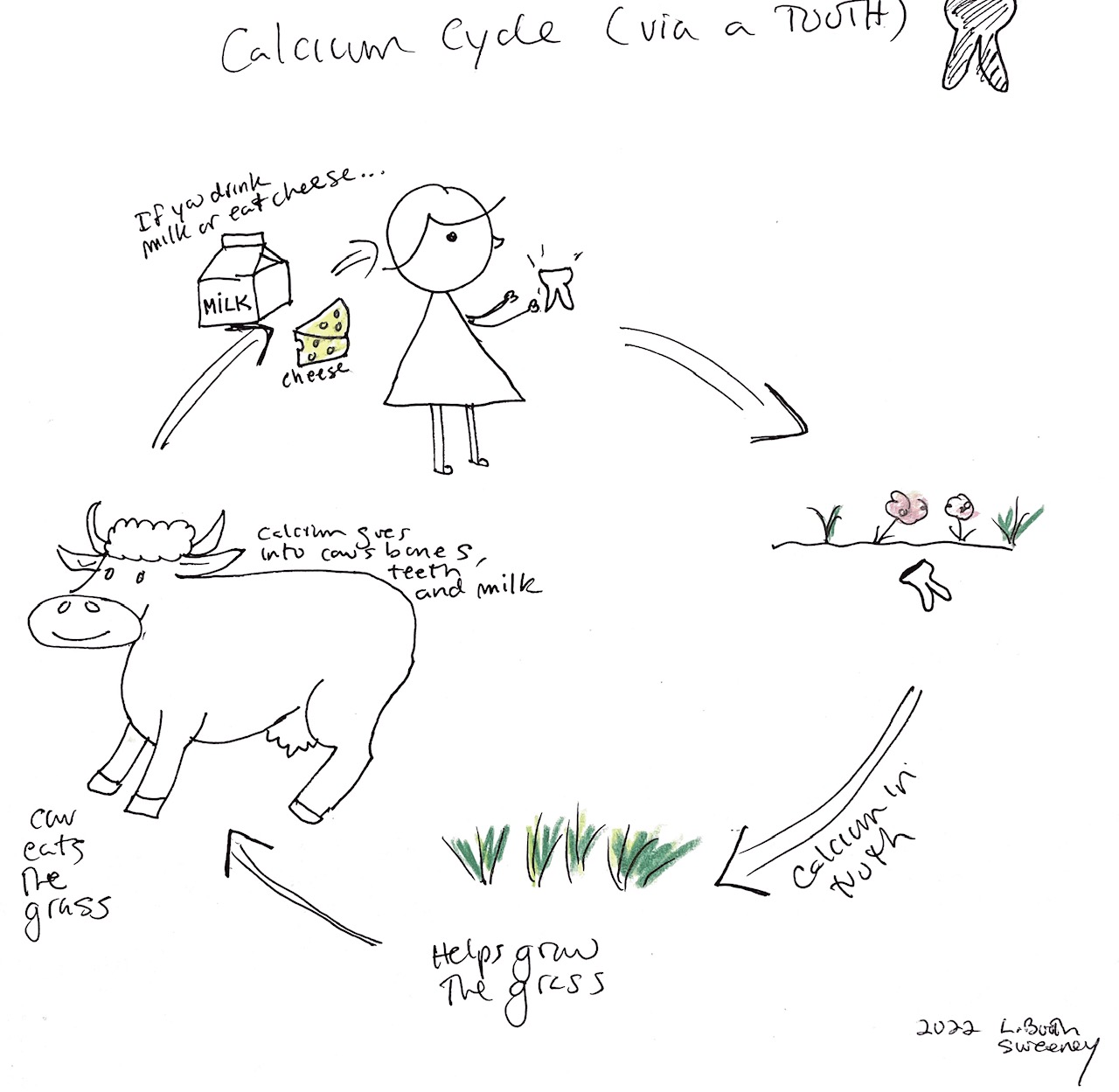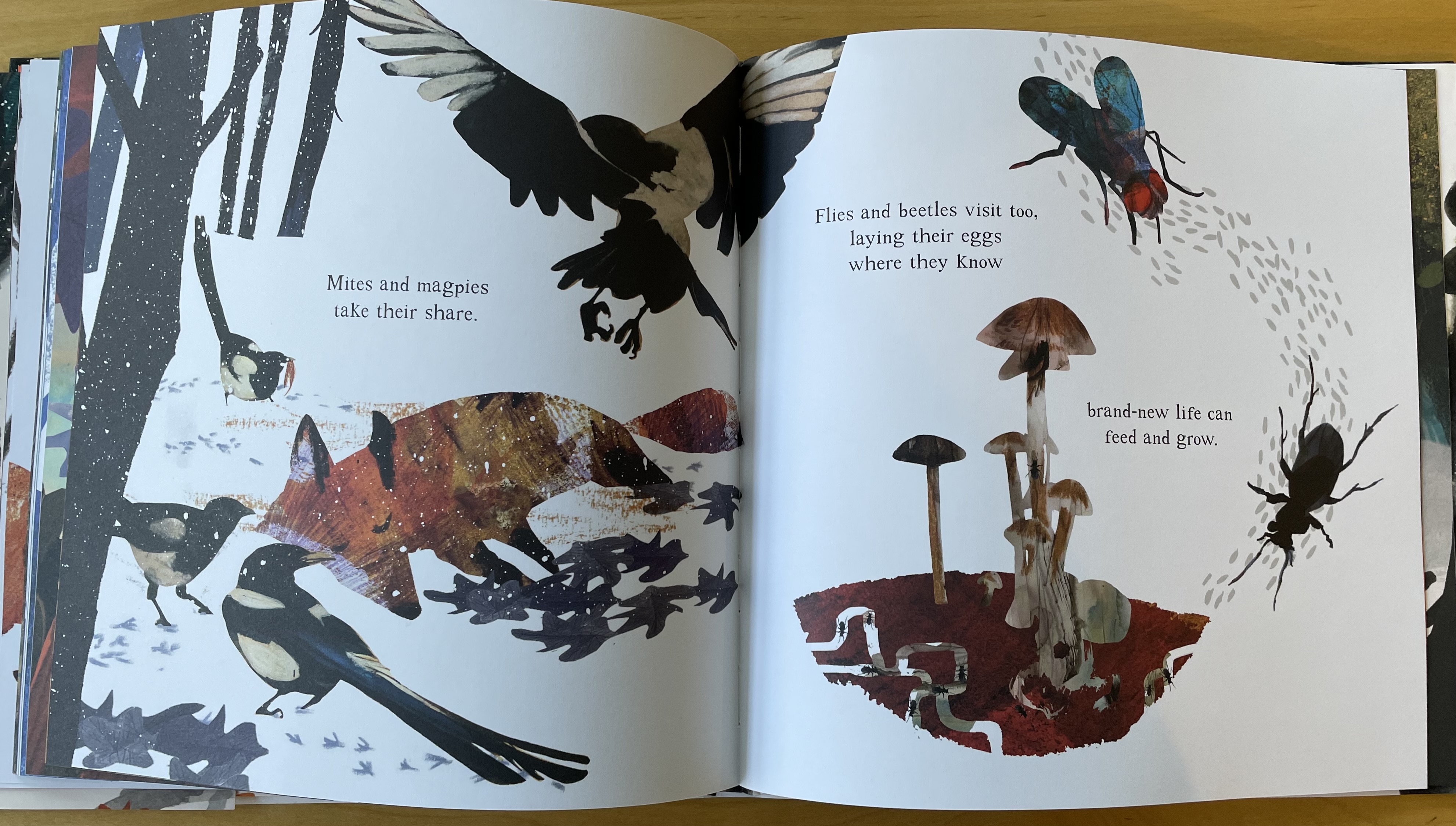 I’m having a FANGIRL moment.
I’m having a FANGIRL moment.
The subject of my ardent admiration is Isabelle Thomas, author of Fox, A Circle of Life Story, (foe ages 5-7) and a gazillion other brilliant children’s books (Actually 150 books but that is still a lot!). The book is gorgeously illustrated by Daniel Egneus.
I fell hard for Isabelle’s Fox book because she takes on two subjects most of us don’t talk about: natural cycles and death.
Cycles are, well, just there. Seasons, the sun, the moon, and elements like water, nitrogen, oxygen, carbon, a pumpkin, and even teeth all follow cycles (see my attempt to draw the “tooth cycle”, on the left).
Some cycles are short – a house fly lives, breeds, and dies in 15 days. Some, like rock cycles, can be millions of years. You’ll find some books about the water cycle for ages 4-6 and plenty of books about “life cycles”, for example, a butterfly.
What’s harder to find, are books that include the death of the butterfly. It seems we’re comfortable with the living part, but not so comfortable with the dying part. It’s in the dying though, the often hidden part to the human eye, where the magic, the regeneration, and the new beginnings happen. (A great exception here is Pat Zeitlow Miller’s class, Sophie’s Squash.)
Fox starts with a winter scene and the promise that despite the frozen ground, “Life is stirring in the shadow.” From the opening pages, the readers know, they are going to love to see beyond the obvious.
We then meet Fox sniffing, leaping, and creeping. She’s hunting for prey for her fuzzy grey cubs, hidden in a cozy den, not from the train tracks. Isabel hints at the right relationships between Fox and her surroundings:
From bird, from plants,
from water, from air,
flow the things foxes need to live and grow.”
When Fox is hit by a car, the story takes an unusual turn.
Instead of focusing on the struggles of her now orphaned cubs, the story focuses on Fox’s slow decay and her return to the earth:

“…Mites and magpies take their share. Flies and beetles visit too, laying their eggs where they know brand-new life can feed and grow.”
(Oh, the writing!)
The book concludes with back materials containing the perfect, child-friendly explanation of “What happens when something dies?”
Brava! Thomas and Egneus for bringing generations of readers a real circle of life story, one that celebrates life and death in equal measures, reminding us that:
“Death is not just an end, but a beginning.”
Are there great children’s books about natural cycles that you love? I’d love to hear from you.
See PART II of this post: Why We Need To Talk about Cycles (and Why the Indigenous Wisdom of Tribal Peoples is a Good Place to Start).